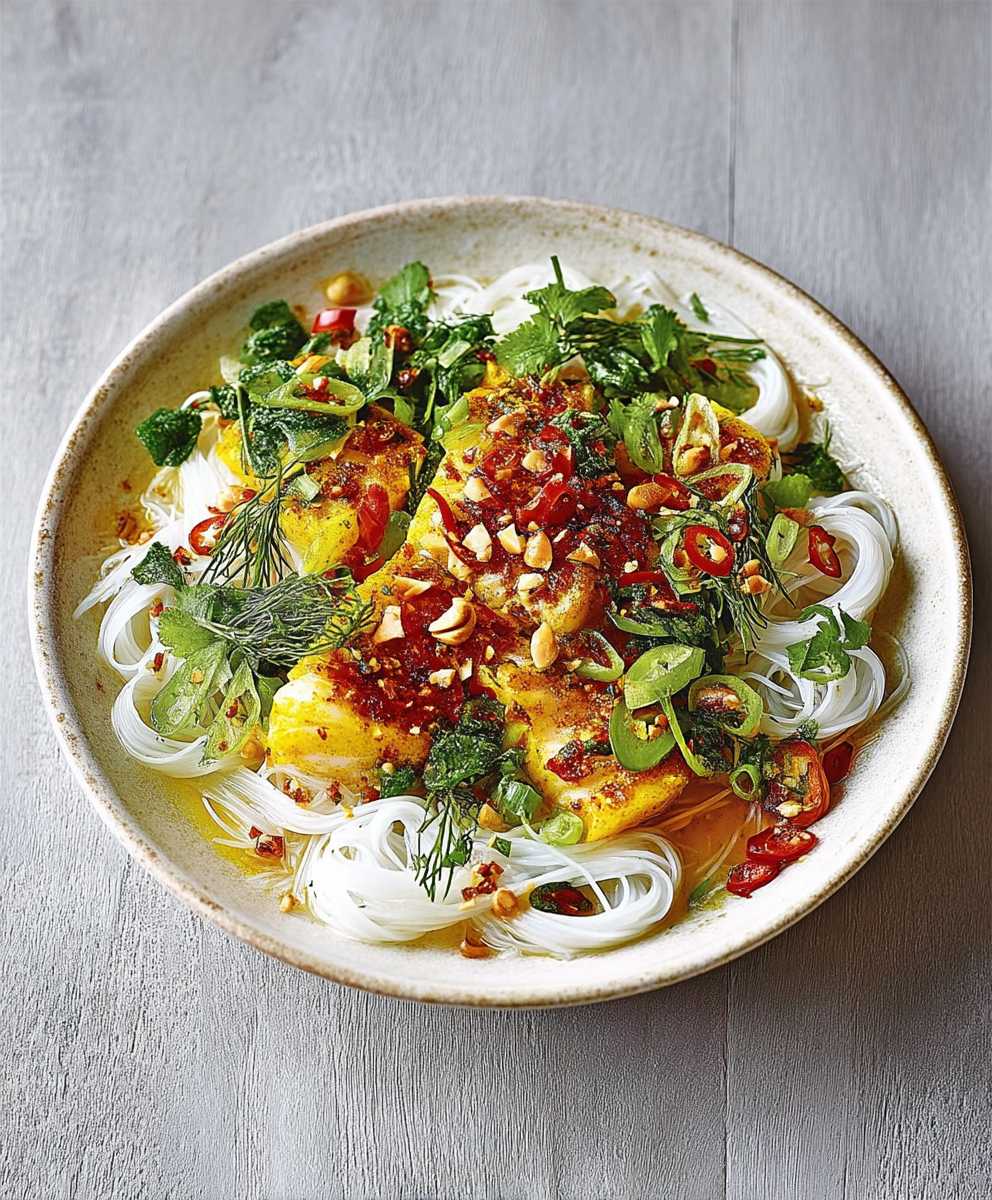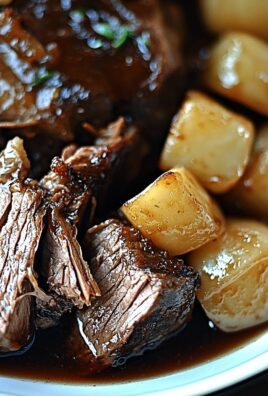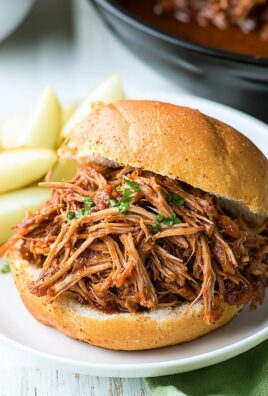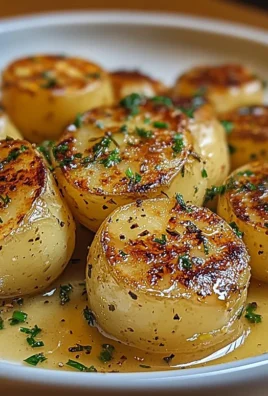Turmeric dill fish noodles: Prepare to embark on a culinary adventure that will tantalize your taste buds and leave you craving more! Imagine delicate, perfectly cooked noodles infused with the vibrant warmth of turmeric, the fresh, herbaceous notes of dill, and the subtle, savory flavor of flaky white fish. This isn’t just a meal; it’s an experience.
While the exact origins of this particular combination are a delightful mystery, the individual components boast rich histories. Turmeric, a staple in Asian cuisine for centuries, has been revered not only for its distinctive flavor and vibrant color but also for its purported health benefits. Dill, with its feathery fronds and refreshing aroma, has been used in cooking and medicine since ancient times. And fish, of course, has been a cornerstone of diets around the world for millennia.
What makes turmeric dill fish noodles so irresistible? It’s the harmonious blend of flavors and textures. The turmeric lends a subtle earthiness and a beautiful golden hue, while the dill adds a bright, refreshing counterpoint. The fish provides a delicate protein that melts in your mouth, and the noodles offer a satisfying chewiness. It’s a dish that’s both comforting and exciting, perfect for a weeknight dinner or a special occasion. Plus, it’s surprisingly easy to prepare, making it a winner in my book! So, let’s dive in and discover the magic of this flavorful creation together.
Ingredients:
- For the Fish:
- 1.5 lbs firm white fish fillets (cod, haddock, or halibut), skin removed
- 1 tbsp olive oil
- 1 tsp turmeric powder
- 1/2 tsp garlic powder
- 1/4 tsp red pepper flakes (optional)
- Salt and freshly ground black pepper to taste
- For the Noodles:
- 1 lb egg noodles (wide or medium)
- 2 tbsp olive oil
- 1 medium yellow onion, thinly sliced
- 2 cloves garlic, minced
- 1 red bell pepper, thinly sliced
- 1 yellow bell pepper, thinly sliced
- 1 cup vegetable broth
- 1/2 cup heavy cream (or coconut cream for dairy-free)
- 1/4 cup chopped fresh dill
- 2 tbsp lemon juice
- Salt and freshly ground black pepper to taste
- Optional Garnishes:
- Fresh dill sprigs
- Lemon wedges
- Extra red pepper flakes
Preparing the Fish
- Prepare the Fish Fillets: Pat the fish fillets dry with paper towels. This helps them sear nicely and prevents them from steaming in the pan.
- Season the Fish: In a small bowl, combine the turmeric powder, garlic powder, red pepper flakes (if using), salt, and pepper. Rub this mixture evenly over both sides of the fish fillets. Make sure each fillet is well coated with the spice mixture.
- Sear the Fish: Heat the olive oil in a large skillet over medium-high heat. Once the oil is shimmering, carefully place the seasoned fish fillets in the skillet. Be careful not to overcrowd the pan; you may need to cook the fish in batches.
- Cook the Fish: Sear the fish for 3-4 minutes per side, or until it is golden brown and cooked through. The fish should flake easily with a fork. The internal temperature should reach 145°F (63°C). If the fish starts to stick, add a little more olive oil to the pan.
- Remove and Set Aside: Once the fish is cooked, carefully remove it from the skillet and set it aside on a plate. Tent it loosely with foil to keep it warm while you prepare the noodles.
Cooking the Noodles and Vegetables
- Cook the Noodles: While the fish is cooking, bring a large pot of salted water to a boil. Add the egg noodles and cook according to package directions until al dente. This usually takes about 8-10 minutes.
- Drain the Noodles: Once the noodles are cooked, drain them well in a colander. Set them aside.
- Sauté the Vegetables: In the same skillet you used to cook the fish (wipe it clean if necessary), heat the olive oil over medium heat. Add the sliced onion and cook until softened and translucent, about 5-7 minutes. Stir occasionally to prevent burning.
- Add Garlic and Bell Peppers: Add the minced garlic and sliced bell peppers to the skillet. Cook for another 3-5 minutes, or until the bell peppers are tender-crisp. Stir frequently to prevent the garlic from burning.
- Deglaze the Pan: Pour in the vegetable broth and scrape up any browned bits from the bottom of the skillet. This adds a lot of flavor to the sauce. Let the broth simmer for a minute or two to reduce slightly.
- Add Cream and Dill: Stir in the heavy cream (or coconut cream) and chopped fresh dill. Bring the sauce to a gentle simmer and cook for another 2-3 minutes, or until it has thickened slightly.
- Season the Sauce: Season the sauce with salt and pepper to taste. Remember that the fish is already seasoned, so taste the sauce before adding too much salt.
- Add Lemon Juice: Stir in the lemon juice. This adds a bright, tangy flavor to the sauce that complements the turmeric and dill.
Assembling the Dish
- Combine Noodles and Sauce: Add the drained noodles to the skillet with the sauce. Toss gently to coat the noodles evenly. Make sure all the noodles are well coated with the creamy sauce.
- Flake the Fish: Gently flake the cooked fish into bite-sized pieces using a fork. Be careful not to over-flake it; you want to maintain some texture.
- Add Fish to Noodles: Add the flaked fish to the skillet with the noodles and sauce. Gently toss to combine, being careful not to break up the fish too much.
- Heat Through: Cook for another 1-2 minutes, or until the fish is heated through. Be careful not to overcook the fish, as it can become dry.
- Serve Immediately: Serve the turmeric dill fish noodles immediately. Garnish with fresh dill sprigs, lemon wedges, and extra red pepper flakes (if desired).
Tips and Variations
- Type of Fish: While cod, haddock, and halibut are excellent choices, you can also use other firm white fish such as tilapia or sea bass. Adjust the cooking time accordingly based on the thickness of the fillets.
- Dairy-Free Option: For a dairy-free version, substitute coconut cream for the heavy cream. The coconut cream will add a subtle sweetness to the sauce.
- Vegetable Variations: Feel free to add other vegetables to the dish, such as sliced mushrooms, zucchini, or spinach. Add them to the skillet along with the bell peppers.
- Spice Level: Adjust the amount of red pepper flakes to your liking. If you prefer a milder dish, omit the red pepper flakes altogether.
- Fresh Herbs: Fresh dill is essential for this recipe, but you can also add other fresh herbs such as parsley or chives.
- Make Ahead: You can prepare the sauce ahead of time and store it in the refrigerator for up to 2 days. When ready to serve, simply reheat the sauce and add the cooked noodles and fish.
- Leftovers: Leftovers can be stored in the refrigerator for up to 3 days. Reheat gently in a skillet or microwave.
- Gluten-Free Option: Use gluten-free noodles to make this dish gluten-free.
- Adding Wine: For a richer flavor, deglaze the pan with a splash of dry white wine before adding the vegetable broth.
- Broccoli Addition: Add steamed or roasted broccoli florets to the dish for added nutrients and texture.
Serving Suggestions
This turmeric dill fish noodles dish is delicious on its own, but you can also serve it with a side salad or crusty bread. A simple green salad with a lemon vinaigrette would be a perfect complement. The crusty bread is great for soaking up the delicious sauce.
Nutritional Information (Approximate)
Note: Nutritional information is an estimate and may vary based on specific ingredients and portion sizes.
- Calories: 550-650 per serving
- Protein: 40-50g
- Fat: 25-35g
- Carbohydrates: 40-50g
Why This Recipe Works
This recipe is a winner because it combines the health benefits of turmeric and fish with the comforting flavors of dill and cream. The turmeric adds a beautiful color and anti-inflammatory properties, while the fish provides lean protein and omega-3 fatty acids. The dill adds a fresh, herbaceous flavor that complements the turmeric perfectly. The creamy sauce ties everything together, creating a dish that is both delicious and satisfying. The addition of lemon juice brightens the flavors and adds a touch of acidity.
Enjoy!
I hope you enjoy this recipe as much as I do! It’s a great way to get a healthy and delicious meal on the table in under an hour. Feel free to experiment with different variations and make it your own. Happy cooking!

Conclusion:
This isn’t just another weeknight dinner; it’s a flavor adventure waiting to happen! The vibrant turmeric, the fresh dill, and the delicate fish combine in a symphony of tastes that will leave you craving more. But beyond the incredible flavor profile, this turmeric dill fish noodles recipe is a nutritional powerhouse, packed with healthy fats, lean protein, and anti-inflammatory benefits. Its a dish thats good for your body and soul, and honestly, what more could you ask for?
I truly believe this recipe is a must-try for anyone looking to add a little excitement and health to their meal rotation. It’s surprisingly simple to make, even for novice cooks, and the results are restaurant-quality. Forget boring, bland dinners this is a dish that will impress your family, your friends, and most importantly, yourself!
But the best part? It’s incredibly versatile! Feel free to get creative with your serving suggestions and variations.
Serving Suggestions and Variations:
* Spice it up! Add a pinch of red pepper flakes to the sauce for a little extra heat. A dash of sriracha would also work wonders.
* Go green! Toss in some steamed broccoli florets, spinach, or kale for an extra boost of vitamins and minerals.
* Creamy Dreamy: For a richer, more decadent sauce, stir in a tablespoon or two of coconut cream or Greek yogurt at the end.
* Noodle Nirvana: While I love it with egg noodles, this recipe works beautifully with rice noodles, zucchini noodles (zoodles), or even spaghetti squash for a lower-carb option.
* Fish Fantasia: Don’t be afraid to experiment with different types of fish! Cod, haddock, or even salmon would be delicious substitutes for the tilapia. Just adjust the cooking time accordingly.
* Lemon Love: A squeeze of fresh lemon juice right before serving brightens up all the flavors and adds a zesty touch.
* Herb Heaven: If you’re not a fan of dill (though I highly recommend giving it a try!), parsley, chives, or even a little bit of tarragon would be lovely additions.
* Garnish Galore: Sprinkle with toasted sesame seeds, chopped peanuts, or a drizzle of chili oil for added texture and flavor.
I’ve tried it with several variations, and each time it’s been a delightful experience. The beauty of this recipe lies in its adaptability. You can easily customize it to suit your own taste preferences and dietary needs.
So, what are you waiting for? Gather your ingredients, put on your apron, and get cooking! I’m confident that you’ll love this turmeric dill fish noodles recipe as much as I do. Its a guaranteed crowd-pleaser and a fantastic way to incorporate more healthy fish into your diet.
Once you’ve tried it, I’d absolutely love to hear about your experience! Share your photos, your variations, and your thoughts in the comments below. Did you add any special ingredients? Did you make any substitutions? What did your family think? Your feedback is invaluable and helps me continue to create delicious and accessible recipes for everyone. Happy cooking, and bon appétit! I can’t wait to see what culinary masterpieces you create!
Turmeric Dill Fish Noodles: A Delicious and Healthy Recipe
Flaky white fish seared with turmeric and garlic, tossed with egg noodles, bell peppers, and a creamy dill sauce. A quick and flavorful weeknight meal!
Ingredients
- 1.5 lbs firm white fish fillets (cod, haddock, or halibut), skin removed
- 1 tbsp olive oil
- 1 tsp turmeric powder
- 1/2 tsp garlic powder
- 1/4 tsp red pepper flakes (optional)
- Salt and freshly ground black pepper to taste
- 1 lb egg noodles (wide or medium)
- 2 tbsp olive oil
- 1 medium yellow onion, thinly sliced
- 2 cloves garlic, minced
- 1 red bell pepper, thinly sliced
- 1 yellow bell pepper, thinly sliced
- 1 cup vegetable broth
- 1/2 cup heavy cream (or coconut cream for dairy-free)
- 1/4 cup chopped fresh dill
- 2 tbsp lemon juice
- Salt and freshly ground black pepper to taste
Instructions
- Prepare the Fish Fillets: Pat the fish fillets dry with paper towels.
- Season the Fish: In a small bowl, combine the turmeric powder, garlic powder, red pepper flakes (if using), salt, and pepper. Rub this mixture evenly over both sides of the fish fillets.
- Sear the Fish: Heat the olive oil in a large skillet over medium-high heat. Carefully place the seasoned fish fillets in the skillet. Be careful not to overcrowd the pan; you may need to cook the fish in batches.
- Cook the Fish: Sear the fish for 3-4 minutes per side, or until it is golden brown and cooked through. The fish should flake easily with a fork. The internal temperature should reach 145°F (63°C). If the fish starts to stick, add a little more olive oil to the pan.
- Remove and Set Aside: Once the fish is cooked, carefully remove it from the skillet and set it aside on a plate. Tent it loosely with foil to keep it warm while you prepare the noodles.
- Cook the Noodles: While the fish is cooking, bring a large pot of salted water to a boil. Add the egg noodles and cook according to package directions until al dente. This usually takes about 8-10 minutes.
- Drain the Noodles: Once the noodles are cooked, drain them well in a colander. Set them aside.
- Sauté the Vegetables: In the same skillet you used to cook the fish (wipe it clean if necessary), heat the olive oil over medium heat. Add the sliced onion and cook until softened and translucent, about 5-7 minutes. Stir occasionally to prevent burning.
- Add Garlic and Bell Peppers: Add the minced garlic and sliced bell peppers to the skillet. Cook for another 3-5 minutes, or until the bell peppers are tender-crisp. Stir frequently to prevent the garlic from burning.
- Deglaze the Pan: Pour in the vegetable broth and scrape up any browned bits from the bottom of the skillet. Let the broth simmer for a minute or two to reduce slightly.
- Add Cream and Dill: Stir in the heavy cream (or coconut cream) and chopped fresh dill. Bring the sauce to a gentle simmer and cook for another 2-3 minutes, or until it has thickened slightly.
- Season the Sauce: Season the sauce with salt and pepper to taste. Remember that the fish is already seasoned, so taste the sauce before adding too much salt.
- Add Lemon Juice: Stir in the lemon juice.
- Combine Noodles and Sauce: Add the drained noodles to the skillet with the sauce. Toss gently to coat the noodles evenly.
- Flake the Fish: Gently flake the cooked fish into bite-sized pieces using a fork. Be careful not to over-flake it; you want to maintain some texture.
- Add Fish to Noodles: Add the flaked fish to the skillet with the noodles and sauce. Gently toss to combine, being careful not to break up the fish too much.
- Heat Through: Cook for another 1-2 minutes, or until the fish is heated through. Be careful not to overcook the fish, as it can become dry.
- Serve Immediately: Serve the turmeric dill fish noodles immediately. Garnish with fresh dill sprigs, lemon wedges, and extra red pepper flakes (if desired).
Notes
- Type of Fish: Cod, haddock, and halibut are excellent choices, but you can also use other firm white fish such as tilapia or sea bass. Adjust the cooking time accordingly based on the thickness of the fillets.
- Dairy-Free Option: For a dairy-free version, substitute coconut cream for the heavy cream. The coconut cream will add a subtle sweetness to the sauce.
- Vegetable Variations: Feel free to add other vegetables to the dish, such as sliced mushrooms, zucchini, or spinach. Add them to the skillet along with the bell peppers.
- Spice Level: Adjust the amount of red pepper flakes to your liking. If you prefer a milder dish, omit the red pepper flakes altogether.
- Fresh Herbs: Fresh dill is essential for this recipe, but you can also add other fresh herbs such as parsley or chives.
- Make Ahead: You can prepare the sauce ahead of time and store it in the refrigerator for up to 2 days. When ready to serve, simply reheat the sauce and add the cooked noodles and fish.
- Leftovers: Leftovers can be stored in the refrigerator for up to 3 days. Reheat gently in a skillet or microwave.
- Gluten-Free Option: Use gluten-free noodles to make this dish gluten-free.
- Adding Wine: For a richer flavor, deglaze the pan with a splash of dry white wine before adding the vegetable broth.
- Broccoli Addition: Add steamed or roasted broccoli florets to the dish for added nutrients and texture.




